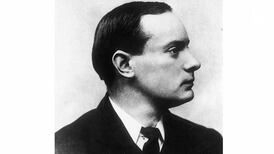On July 20th, 1863, Alderman George Roe, a former lord mayor of Dublin and the owner of one of the largest distilleries in 19th-century Europe, died.
George Roe was born in Booterstown, Co Dublin, to Peter and Margaret Roe in 1796. The Roe family played a key role in the history of the Liberties. In 1819, George married Mary, daughter of the late Thomas and Elizabeth Franklin. He inherited a distillery in Thomas Street from his father in the 1820s and he amalgamated it with another family distillery in Pimlico. The combined distillery became known as George Roe & Co and it covered over 17 acres from Thomas Street to the river Liffey. By 1887, George Roe & Co was the largest producer of whiskey in Europe,
It was George’s nephew Henry Roe jnr who gave £230,000 pounds (about €35 million in today’s money) to pay for the restoration of Christ Church Cathedral and the construction of the Synod Hall. A large smock windmill, built in 1759, powered the distillery, and it is still in existence in the grounds of the Guinness brewery, where it is known as St Patrick’s Tower. Diageo has converted the former Guinness Powerhouse on Thomas Street into a new distillery in recent years, where they produce a new whiskey called Roe & Co in honour of George Roe. Diageo has also restored the Roe tomb in Mount Jerome Cemetery in recent years.
George Roe was a member of Dublin Corporation, and he succeeded Daniel O’Connell as lord mayor of Dublin in 1842. He was a friend of O’Connell’s and a supporter of Catholic Emancipation. A Liberal in politics, he was a justice of the peace, deputy lieutenant for Dublin City and chief magistrate. He was appointed to the Wide Streets Commission in 1847 and was high sheriff of the city in the same year. He served on several other corporation committees, including the Vartry Water Committee. The Vartry scheme aimed to provide clean water to Dublin to improve major health issues associated with outbreaks of cholera.
Far away, so close – Fionnuala Ward on measuring distance
The Derry man who influenced George Washington and Alexander Hamilton - Brian Maye on Hercules Mulligan
The BBC’s national question: Frank McNally on Edna O’Brien and ‘the North of Ireland’
Dictionary on the Double – Frank McNally on the enduring literary life of Patrick Dinneen
George Roe was appointed chairman of the Great Industrial Exhibition of 1853 organised by the Royal Dublin Society on its premises at Leinster House. The exhibition was financially supported by William Dargan, the well-known railway entrepreneur. Queen Victoria and Prince Albert visited the exhibition in August of that year together with the Prince of Wales. Though not an academic by profession, George Roe was elected a member of the Royal Irish Academy in January 1852. His nominators were Sir Robert Kane, first president of Queen’s College Cork and George Petrie, the distinguished antiquary.
George Roe’s main residence was at Nutley on the Stillorgan Road now the home of Elm Park Golf & Sports Club. Nutley House is a small Georgian house which has been attributed to Irish architects Richard and William Vitruvius Morrison. Roe engaged Ninian Niven (a director of the Botanic Gardens) to design his garden at Nutley which included a park, lake, and belvedere, some of which are still to be seen today. George Roe’s demesne at Nutley has been described as “one of the finest demesnes in the county of Dublin – it was planted and kept with exquisite taste surrounding a mansion furnished in a manner in which a Duke might be satisfied.”
Due to ill health, Alderman Roe retired from both the distillery and his public offices in the 1860s. Advised by his doctors, George and Mary Roe moved to milder climates in Torquay in Devon, where he died on July 20th, 1863. His remains were returned to Dublin for burial in Mount Jerome Cemetery. His funeral from his home in Nutley was one of the largest ever seen in Dublin since that of his friend Daniel O’Connell. As the funeral passed through Donnybrook, all the shops were closed, and the local people stood in respect for their local benefactor. His wife Mary inherited the family business together with his entire estate. One of George Roe’s many obituaries stated: “He was held in the highest esteem for his integrity and demeanour as a gentleman and a citizen, by men of all parties and creeds; and it is scarcely necessary to add that his death will be lamented by a large circle of friends as well as by the public.” After his death his wife Mary continued to live at Nutley until her death in 1877.














